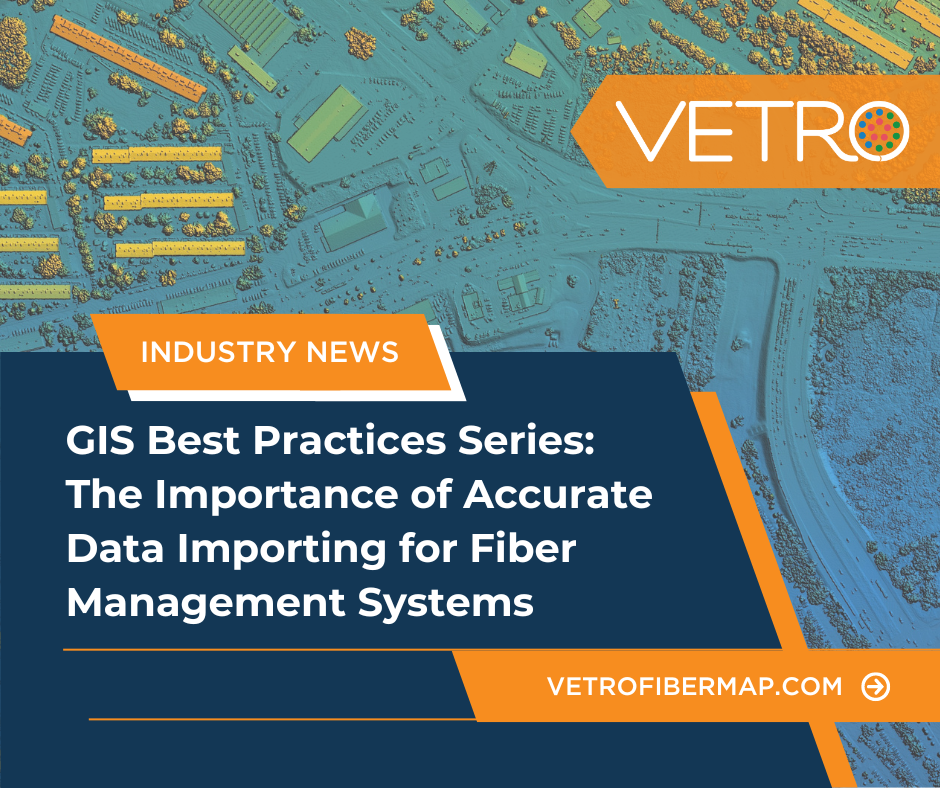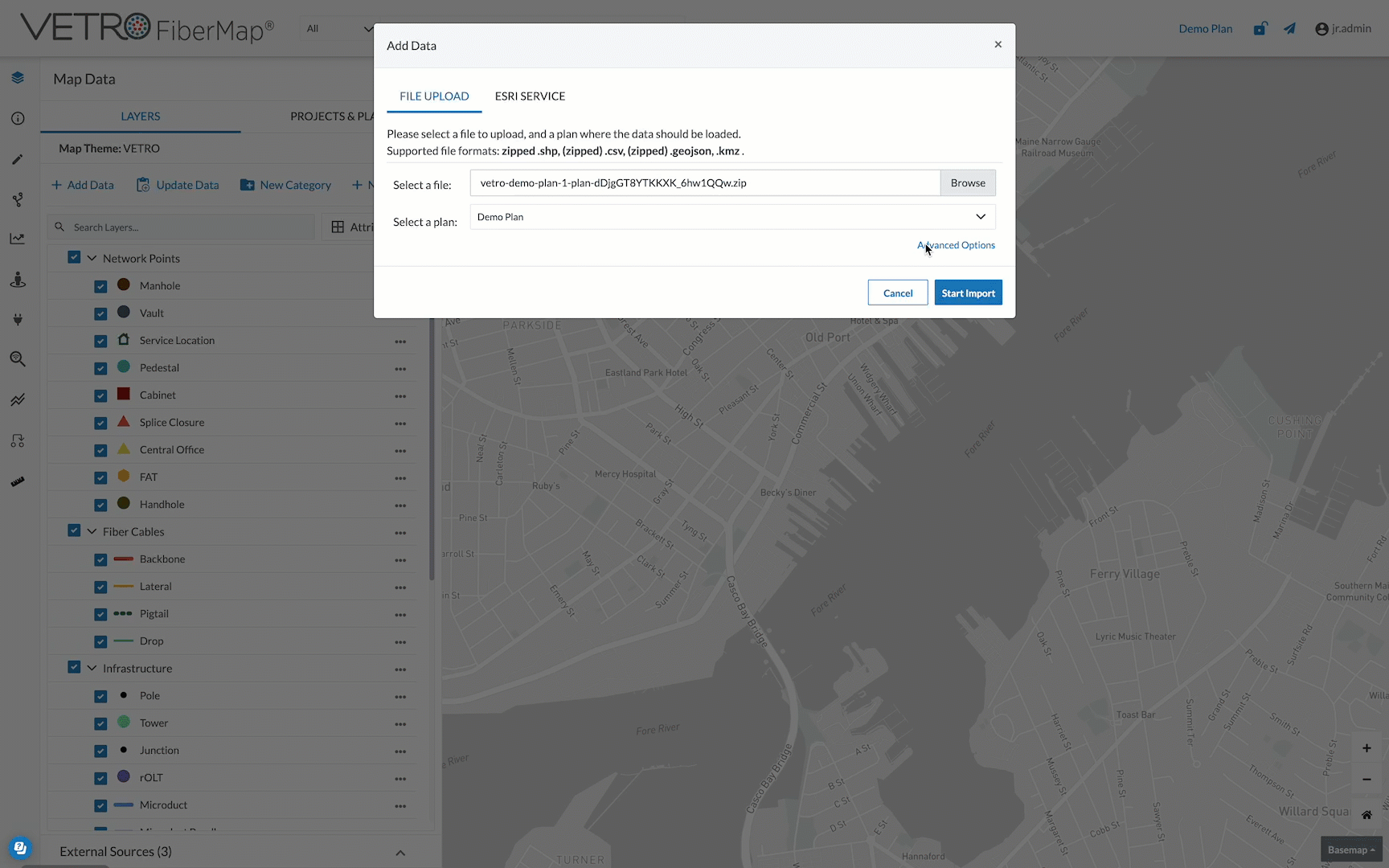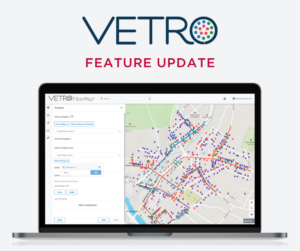
Importing data and map layers accurately into your fiber management GIS platform is crucial for efficient network management. Accurate data import is the backbone of effective fiber management. It ensures that your GIS platform is up-to-date, reflective of the physical network, and ready for various operational tasks. So why is it so important to ensure your fiber management software of choice can easily handle data importing?
Data importing can be time consuming if not handled properly. Your data is the backbone of all your operations. Whether you are importing data from Shapefiles, KML/KMZs, or GeoJSONs, getting the data into your system correctly and quickly is urgent. With VETRO, you can import your data directly into the layer(s) it is needed in, with an easy-to-use interface for mapping where the data will land.
Data import errors can result in costly delays and other losses. Mapping data to the correct layer is vital for maintaining data integrity and ensuring that it aligns with your network’s physical reality. Manually uploading multiple layers of data and then moving it into various existing layers is a tedious process that invites the possibility for manual errors (e.g. missed clicks, typos). With VETRO’s direct import feature, you can avoid errors and trust that the automated import has placed everything where it needs to be.
Data consistency is key, especially as your organization grows. We know from talking with our customers that maintaining data integrity and consistency across various datasets and sources is a major concern. Inconsistencies in the way data was uploaded creates headaches down the road, which can be compounded by events like staff turnover or the introduction of new data into existing data structures. With its attribute mapping capability, VETRO ensures your imported data aligns with your existing data structure, which helps you maintain consistency and reliability in your data.
VETRO FiberMap and Data Importing
Recently, VETRO FiberMap made a significant upgrade to how we handle data importing with the new direct import feature. This update was designed to help our customers more easily manage data imports, reduce errors, and ensure accuracy in their data.
One of the challenges faced by internet service providers (ISPs) is handling diverse datasets that need to be integrated seamlessly. VETRO FiberMap simplifies this with batch importing capabilities. It allows you to upload data in bulk, saving valuable time and reducing the chance of errors associated with manual data entry.
VETRO FiberMap provides intuitive tools for mapping and categorizing data accurately. This precision enhances network planning, maintenance, and troubleshooting. In addition, VETRO offers powerful editing features that empower ISPs to make real-time adjustments to their network data. Whether it’s updating a network route or modifying connection details, the platform simplifies the process, reducing downtime and service disruptions.
Accurate data import and mapping are pivotal in the world of fiber management for ISPs. VETRO not only recognizes the importance of these processes but also excels in providing a user-friendly, efficient, and scalable solution. By choosing VETRO, you are ensuring that your fiber network is managed with precision and agility, ultimately leading to better service delivery and customer satisfaction.

Want to learn more about direct import? Visit our Help Center for more information.
Interested in learning more about VETRO? We are laser-focused on helping fiber internet providers better serve their customers, and invest constantly in upgrading our products. Schedule a demo today to see for yourself how VETRO FiberMap makes fiber management radically simpler.
About VETRO
VETRO builds software that makes it radically simpler and faster for broadband providers to plan, design, build, and operate their fiber optic networks. Our map-based SaaS platform is easier to use and more powerful than traditional tools, and enables network owners, operators and sponsors to benefit from a modern, integrated, and connected digital hub for their physical network assets.




